(4 min read) The Leopold Museum offers the world’s most comprehensive immersion into Vienna's Secession movement, where visitors can experience how Klimt, Schiele, and their revolutionary colleagues reimagined art as a complete way of life.
Overview
Vienna’s Leopold Museum opened in 2001 and houses Rudolf Leopold’s (1925-2010) massive collection of Austrian modern art, assembled over five decades. But this isn’t just another modern art museum. It’s an immersion into one of Europe’s most revolutionary artistic movements — Secessionism — where painting, furniture, architecture, and decorative arts merged into a unified aesthetic vision that challenged everything the 19th century thought it knew about beauty.
While modern art outside the Secession movement per se is on display here, it is the Secession-related work that was of most interest to me and which makes this museum unique, so that is the focus of this essay.
The Secession movement was launched in 1897 when Gustav Klimt and his colleagues literally “seceded” from Vienna’s conservative Academy of Fine Arts, and represented more than artistic rebellion.
These artists sand designers sought to create a new visual language for the modern age, one that embraced both luxury and functionality, sensuality and geometric precision. Their motto — “To every age its art, to every art its freedom” — became the battle cry for total artistic transformation.
As an architecture student, I went through a “Secessionist phase,” borrowing every book I could from the library on artists like Klimt and architects and designers like Loos, Hoffmann, and the Weiner Werkstaette collective. It’s extraordinary stuff, and has influenced countless designers over the past 125 years.
One thing that makes many of the galleries in the Leopold Museum great is that they present complete environments, which is how Secessionist art arguably must be experienced. The museum’s galleries recreate entire interior schemes, from Gustav Klimt’s reconstructed studio to Josef Hoffmann’s bedroom suites, allowing visitors to understand how these artists envisioned daily life as an aesthetic experience. Every chair, lamp, and wall covering was designed to work in harmony.
One Secessionist artist I never liked much back in college when I studied the movement was Egon Schiele. But the Leopold Museum has the biggest collection of Schiele art in the world, and dedicate several galleries to him, not just displaying the art but providing context as well. So while I am still not a fan, I definitely gained a new appreciation for him and found many pieces I genuinely love (see “In Detail” below.
But the Leopold’s real achievement is demonstrating how the Secessionists weren’t just another “Art Noveau” inspired movement. They created the blueprint for modern design thinking.
Their integration of fine and applied arts, their embrace of both luxury and mass production, and their belief that beautiful objects could transform society anticipated everything from the Bauhaus to contemporary design culture. Vienna around 1900 wasn’t just producing great art — it was inventing the modern world’s aesthetic DNA.
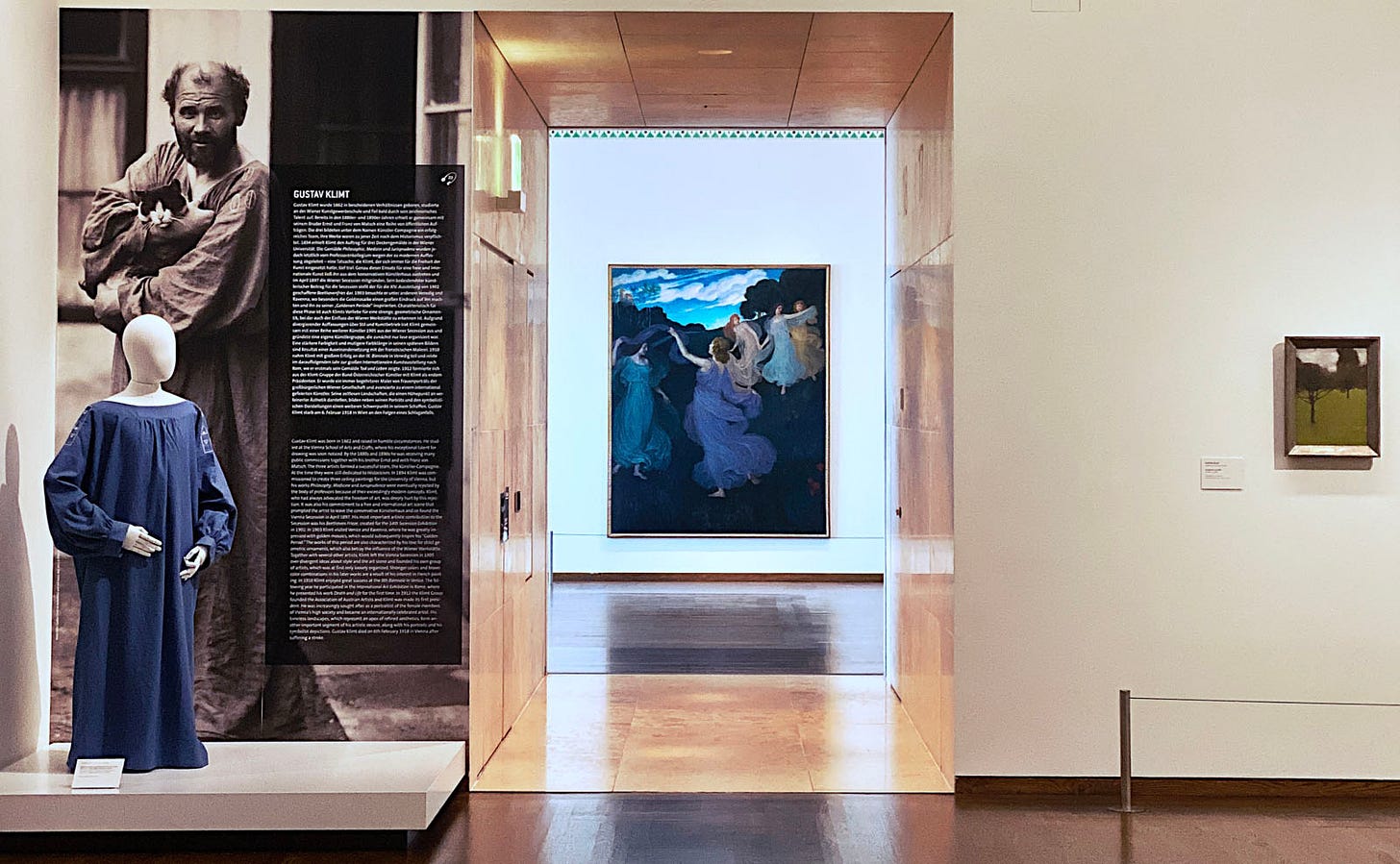
Art in Detail
Here are three Notes showing fifteen paintings by Gustav Klimt, Ego Schiele, and other Secessionists:
** Please like and/or restack this post if you enjoyed it; it helps others to find it! **
Practical Information
Where: Vienna, Austria
My Visit: 30 June 2022
Best For: Those with an interest in fin de siecle art movements; architects with a love for early modernism.
Pro Tip: Don’t rush through the furniture and decorative arts galleries to get to the famous paintings — the Secessionist vision only makes complete sense when you see how these artists designed entire environments, from Hoffmann's bedroom suites to Moser's integrated lighting schemes.


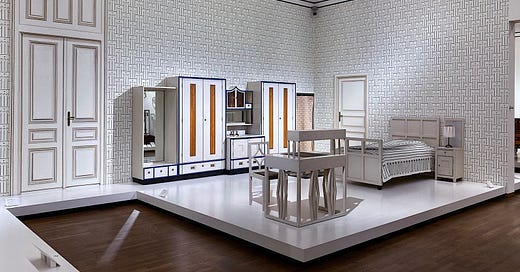




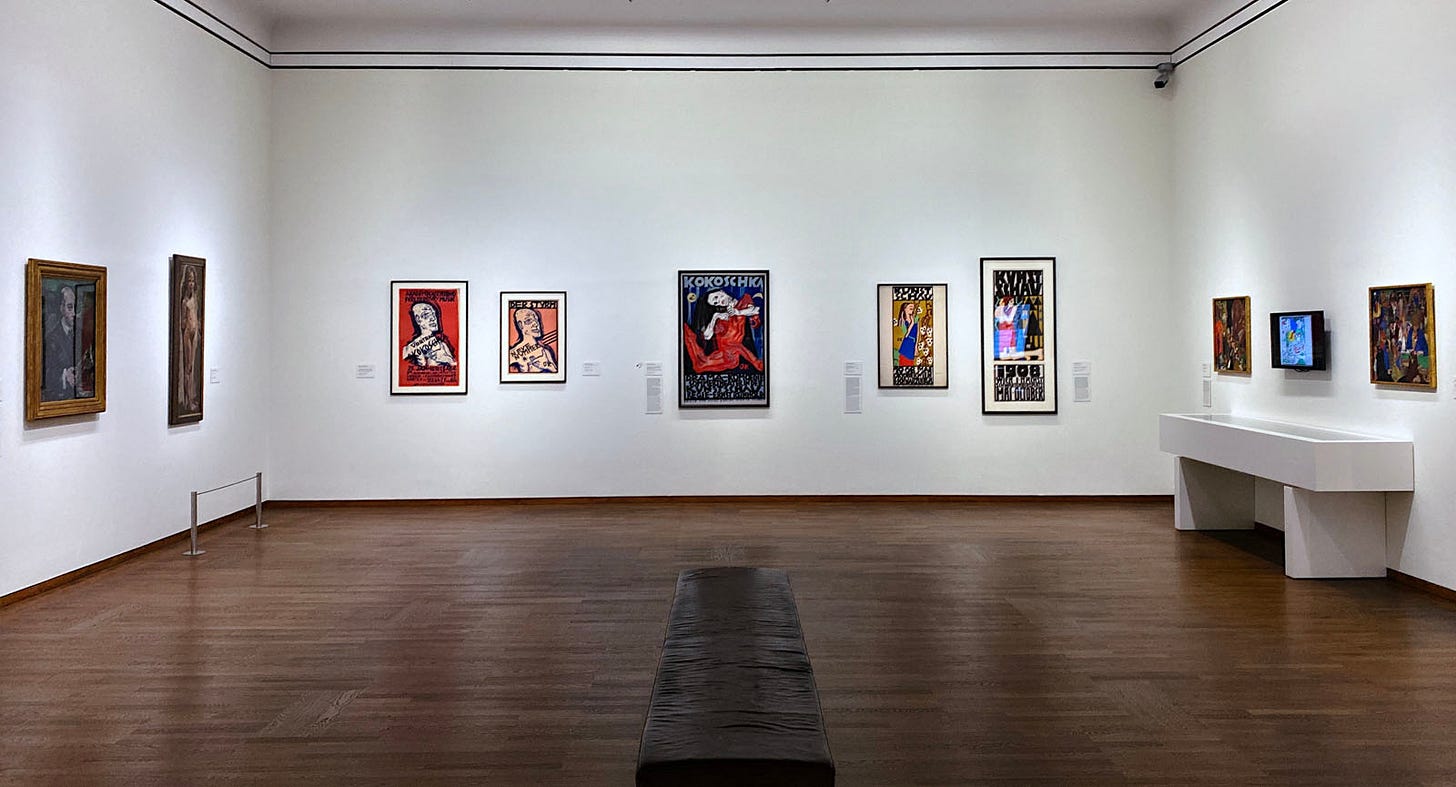
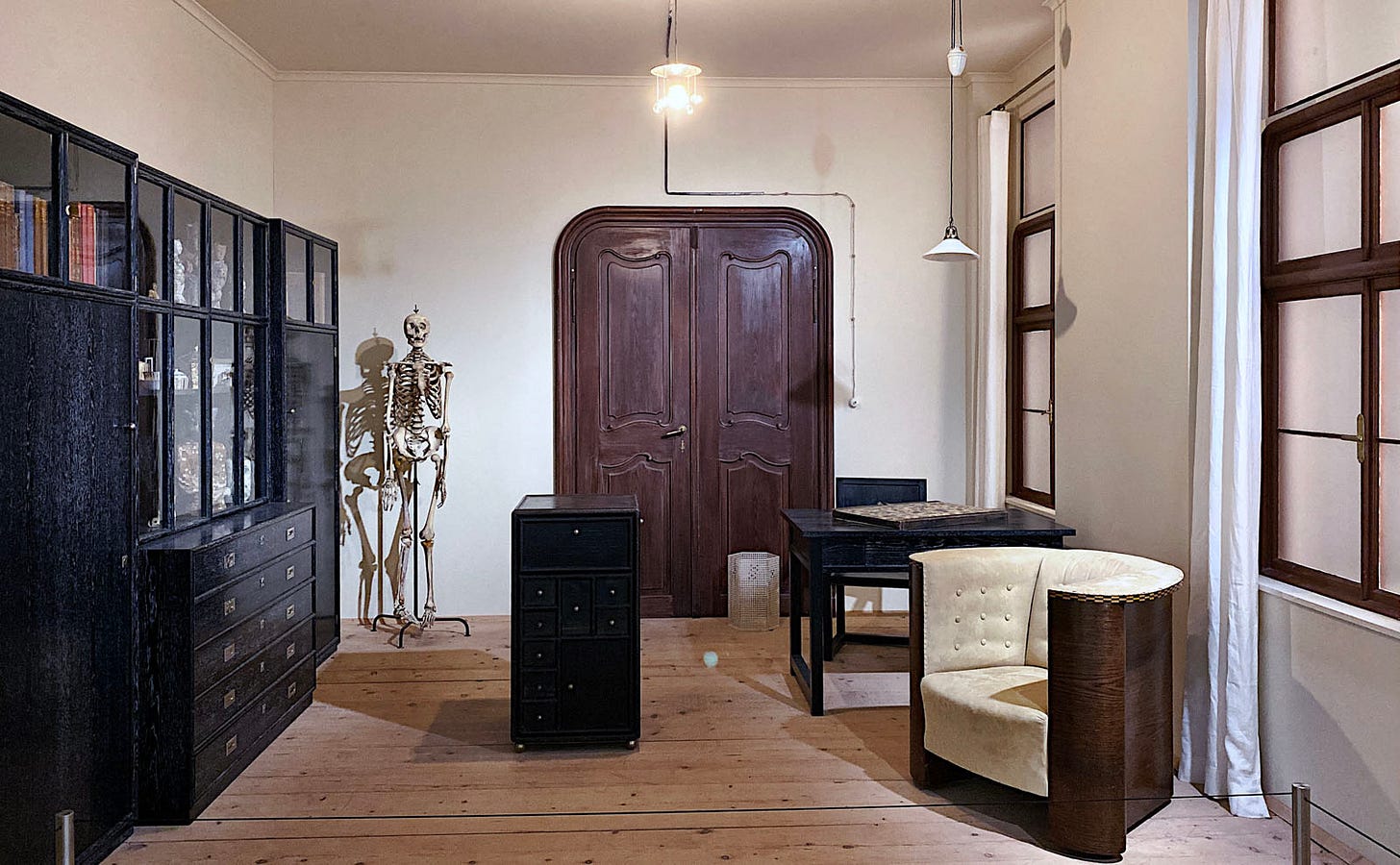

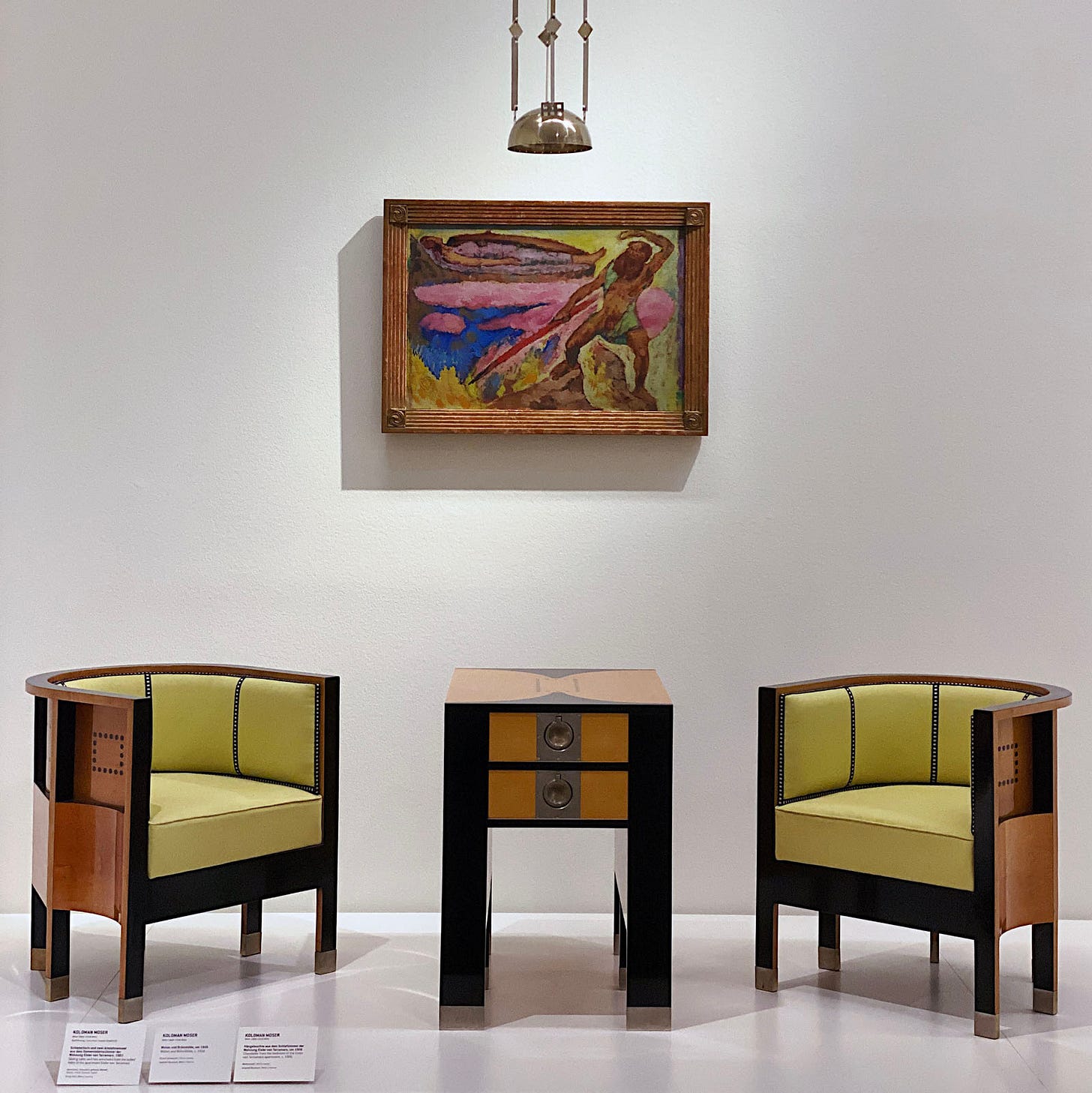




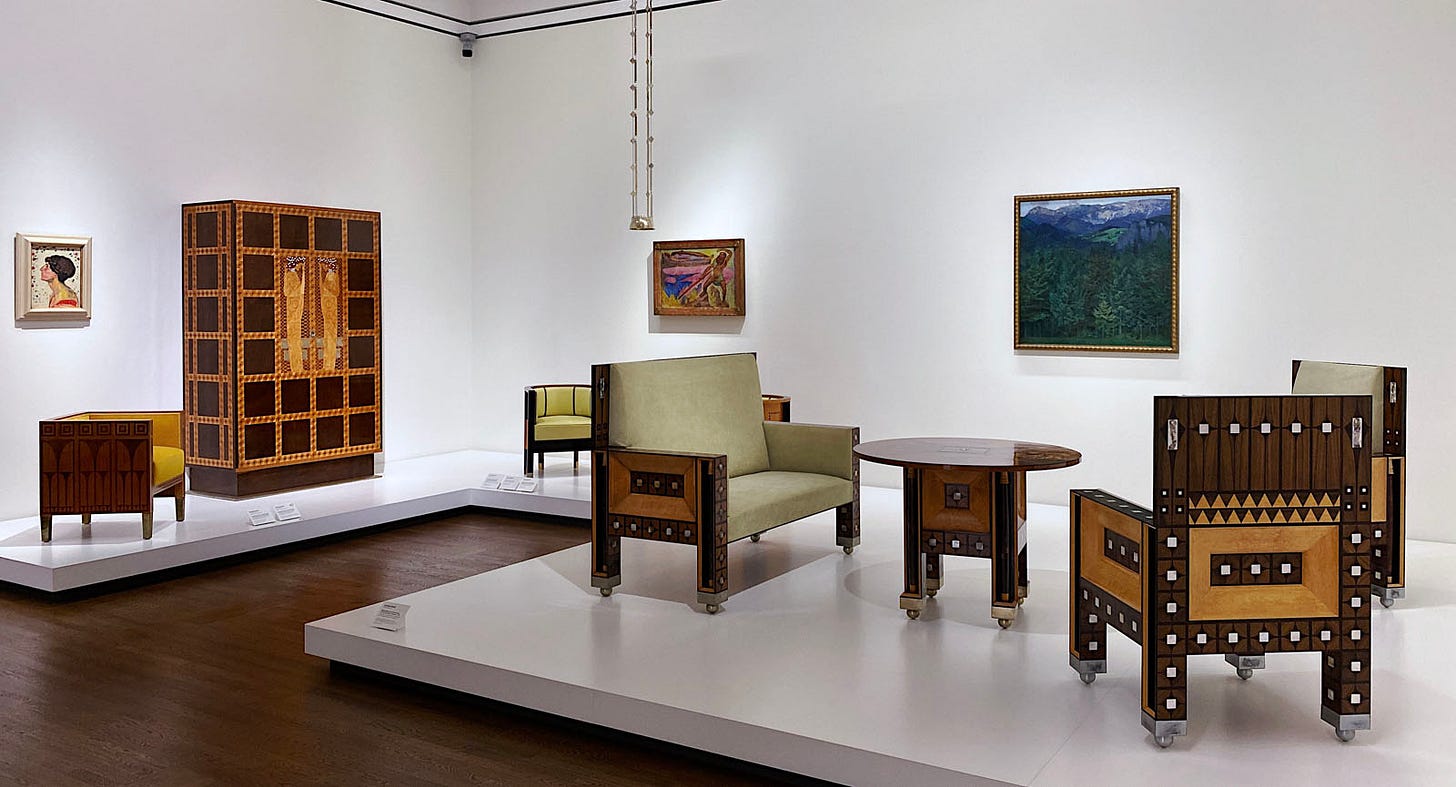
One of the best! As an expat living in Vienna for my entire adult life, it‘s hard for me to imagine NOT being a fan of Schiele, but that‘s just me. I actually appreciate him more than Klimt, for SO many reasons.
Fascinating, another museum I didn't realise I have to visit - thanks Ben!